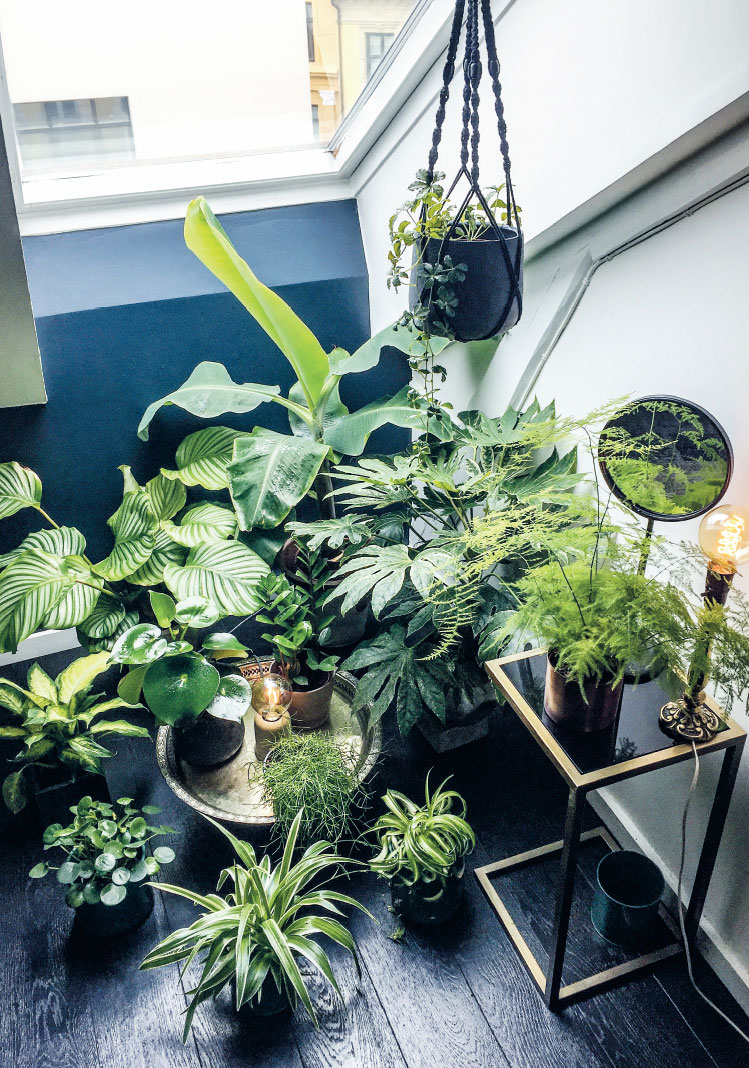
The benefits of bringing nature indoors
Have you heard of the concepts nature-deficit disorder (NDD) and the forest air effect? NDD refers to the idea that many people, and especialy children, suffer from not spending enough time outdoors. This lack of contact with nature in our lives, and living in environments characterized by stress, noise and sitting down, can cause numerous physical and mental problems. In Norway, researchers at the University of Life Sciences have identified a solution they call the forest air effect: bringing nature indoors. They discovered that by introducing green indoor plants into the home and workplace, people experience a greater sense of calm, presence and contentment. They feel more confident and less tired – the so-called forest air effect.
Another concern is air pollution. According to the World Health Organization (WHO), air pollution causes the deaths of seven million people every year. That’s scary reading! Sources of air pollution include motor vehicles, industry, cattle farming and coal-powered electricity generation. Deforestation is making the problem worse and a large number of plants and trees are disappearing as ever-greater quantities of toxins are emitted. The result is that the air we breathe is far from clean. In the Indian city of New Delhi, the air was (and still is) so polluted that in 1992 the researcher and environmental campaigner Kamal Meattle suffered from allergic reactions that nearly killed him. His lung capacity at the time had been reduced to 70 per cent. Kamal could see that something had to be done – both for himself and for everyone else in New Delhi. He had studies conducted that showed how effective houseplants were at influencing our working environment, both mentally and physically.
Based on the research available from the National Aeronautics and Space Administration (NASA) and other bodies, including the Institution of Engineering and Technology (IET), Kamal found that there are three really common houseplants that have a proven ability to help improve the indoor climate: golden pothos (Epipremnum aureum), mother-in-law’s tongue (Sansevieria trifasciata) and areca palm (Dypsis lutescens). In a widely viewed TED Talk, he calmly explains how we can all use common houseplants that are easy to find in plant shops to “refresh” our interior environments.
Kamal tried out these plants in the building where he himself worked. The research established that employees were at less risk of headache, reduced lung capacity, asthma and other symptoms. Productivity also increased by 20 per cent.
HANDY HINT
By putting several plants together, you are creating a tiny forest. In this miniature forest, the plants start a collaboration project in which they all breathe together, release moisture and at the same time remove harmful substances from your indoor air. Not only is this forest beautiful, it is working to improve your health and well-being.
FACT
All plants convert carbon dioxide to oxygen, though not all plants have air-cleaning capabilities. According to NASA, air-cleaning plants are characterized by the fact that they remove VOCs from the air. Plants that are particularly good at cleaning air are mainly from tropical and subtropical regions.
